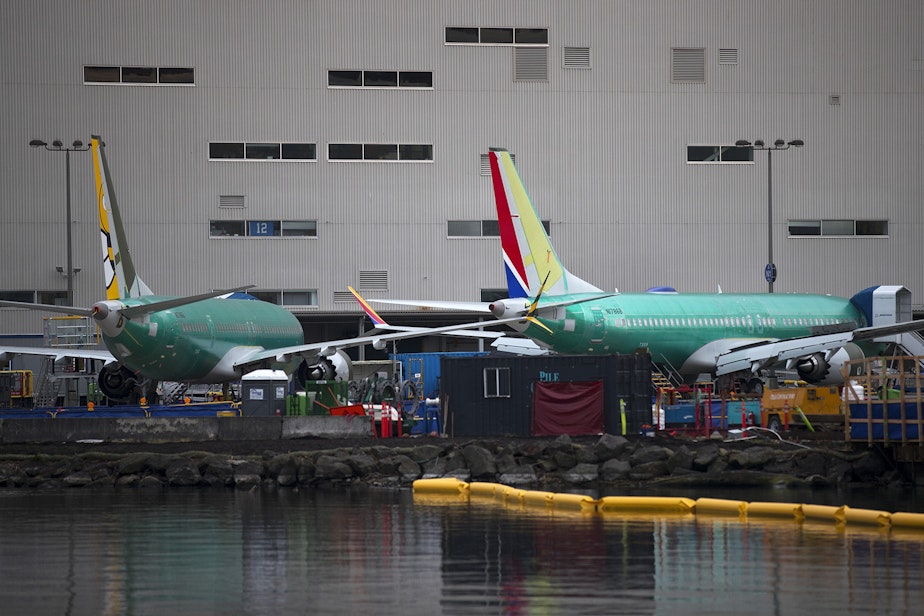Lawsuits accuse Boeing of failing to protect workers from toxic chemicals

In 1980, Deborah Ulrich worked as a “floater” at Boeing’s now defunct Electronics Manufacturing Facility. Back then it was located on the east side of Boeing Field. She had a variety of tasks – dipping soldering boards in industrial solvents to clean them and touching up patterns on circuit boards, among other duties.
She was also pregnant with her daughter, Marie Riley.
In her new investigative report for The Everett Herald, journalist Rachel Riley details the allegations of three families, including Deborah Ulrich’s, who believe their children’s congenital medical conditions are the result of exposure to toxic chemicals and heavy metals at Boeing plants.
The families are suing Boeing for failing to protect workers.
Riley says internal documents show that Boeing leaders were warned about the potential risk of chemical exposure, going as far back as March 18, 1980, when Dr. Barry Dunphy, Boeing’s occupational health manager, had a meeting with then-Boeing president Malcolm Stamper.
"Dunphy was basically advocating for a stronger program in what's called industrial hygiene," Riley says. "And he wanted to see more chemical labeling and more employee training, more monitoring, and specifically, he wanted all of those health and safety functions to be happening in Boeing's medical department because, you know, chemical exposure is really a medical issue."
The U.S. really started looking at workplace health and safety in the 1970s after the passage of the Occupational Safety and Health Act. And it took Boeing more than a decade to create strong programs regarding workplace safety.
Sponsored
"And, you know, we've definitely become more aware of the impacts and potential impacts of these sorts of harmful chemicals in the workplace," Riley says.
So far, Boeing has not commented on the allegations. But Riley has reconstructed some of the arguments the company made during the discovery process in court. Boeing does have worker training programs and chemical labeling programs that have grown stronger throughout the years.
"Boeing basically does its best to tailor the warnings and trainings that different employees receive about chemical risks to exactly what they do on the job, what processes they use, and what chemicals are used," Riley explains.
But there can be a big difference between policy and what happens on the factory floor.
"Some of what has surfaced during discovery is that these managers aren't necessarily able to enforce safety rules all the time," Riley says. "And so these rules, written in handbooks and these warnings posted at factories – it's unclear if that is actually how things are playing out in reality, day to day, in these really, really busy and hectic environments."
Sponsored
One of the three plaintiffs has settled with Boeing. The other two are in ongoing settlement discussions. But there is a chance they could go to trial. For now, the discovery process continues, with both sides deposing experts and gathering evidence to prove their claims.
Although only three families that have brought forward these allegations, Riley says we could see more in the future.
"When Dr. Dunphy gave his presentation in 1980, he put a number on it – he said that we're talking about 30,000 employees potentially exposed," she says. "And about 1,500 of them a year that would be seriously damaged by this exposure. So, if that's the case, it could definitely become a big problem for the company."
You can find Riley's reporting on this story here. And a follow up on one of the families here.





